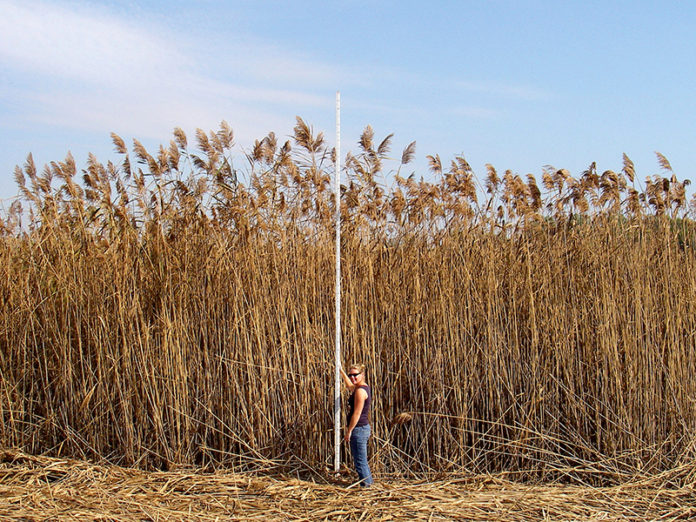The European Common Reed (Phragmites australis), commonly referred to as Phragmites (pronounced frag-my-tees), was deemed Canada’s worst invasive species in 2005 and has since only gotten worse. Phragmites arrived in North America in the 1940s, and has since spread aggressively to 48 states in the United States and all Canadian provinces and territories except the Yukon. Once established, it spreads quickly to take over the area, growing in dense monocultures that can be several kilometres thick, and up to six metres tall. In Ontario, the plant has spread to become strongly established in a total area equivalent to over 50 square kilometres. Virtually every region of Ontario has been impacted by this plant. It is most prevalent in ditches, along roadways, and in wetlands across the province. In 2015, a research study comissioned by the Laurel Creek Headwaters Environmentally Sensitive Landscape Public Liaison Committee found 32 Phragmites patches within Waterloo, Wilmot, Woolwich and Wellesley Townships.
Phragmites has terrible consequences for the environment and for the people who depend on the stability of that environment. It chokes out the native vegetation because its roots release toxins into the soil to hinder or kill surrounding plants. Many local species, including species at risk depend on this native vegetation for habitat and food. This subsequently decreases biodiversity, destabilizing the local environment and reducing its resilience. Along roadsides, it causes road safety concerns because of clogged drainage ditches and elevated risk of fire. Phragmites has also been known to take over agricultural fields, lower property values of mainly waterfront properties, and impact recreational activities such as swimming, boating, and angling.
Around 120 volunteers and experts from various organizations from across Ontario, including Ontario Phragmites Working Group (OPWG), the Ministry of Transportation and the Invasive Phragmites Control Centre, met at RIM Park in Waterloo the week of February 1st for their annual meeting to discuss best eradication practices, tips, and what is working and what is not. The most effective management technique developed so far is a chemical herbicide containing glyphosate, also known as Roundup. The City of Toronto uses Roundup in their wicking technique, which involves wiping the chemical onto the plant by hand using a car wash glove. Roundup is not approved for use in and near waterways. For these areas, the most common eradication methods are cutting, spraying, burning the plant, and bending the reeds down to drown them underwater, done typically by dedicated local volunteers and members of OPWG. They work many hours facilitating effective, efficient, and environmentally responsible management Phragmites in Ontario through education, information sharing, and investigation and pursuit of effective management tools.
Many local agencies do not fully comprehend the impact that Phragmites has had on the local environment. The Region of Waterloo currently does not have a strategy to deal with the invasion. The Ministry of Transportation has initiated extensive Phragmites eradication plans. From Windsor to Tobermory, including Waterloo Region, 2.7 square kilometres of Phragmites have been sprayed with Roundup in 2018 along highways 3, 40, 401, and 402. There is still a long way to go, as Phragmites is still spreading at a fast rate. It is important to remember that it is not just the invasive species that need to be removed, but that native plant species, such as American beach grass (Ammophila breviligulata), also need restoration efforts.































